Disclaimer
Abstract
Acknowledgments
List of Figures
List of Tables
Acronyms and Abbreviations
Chapter 1 - Overview
1.1 Introduction
1.2 SWMM’s Object Model
1.3 SWMM’s Process Models
1.4 Simulation Process Overview
1.5 Interpolation and Units
Chapter 2 – Meteorology
2.1 Precipitation
2.1.1 Representation
2.1.2 Single Event v. Continuous Simulation
2.1.3 Temporal Rainfall Variations
2.1.4 Spatial Rainfall Variations
2.2 Precipitation Data Sources
2.2.1 User-Supplied Data
2.2.2 Data from Government Agencies
2.2.3 Rainfall Interface File
2.3 Temperature Data
2.4 Continuous Temperature Records
2.5 Evaporation Data
2.6 Wind Speed Data
Chapter 3 – Surface Runoff
3.1 Introduction
3.2 Governing Equations
3.3 Subcatchment Partitioning
3.4 Computational Scheme
3.5 Time Step Considerations
3.6 Overland Flow Re-Routing
3.7 Subcatchment Discretization
3.8 Parameter Estimates
3.8.1 Subcatchment Conceptualization
3.8.2 Subcatchment Area
3.8.3 Imperviousness
3.8.4 Subcatchment Width
3.8.5 Slope
3.8.6 Manning’s Roughness Coefficient, n
3.8.7 Depression Storage
3.8.8 Parameter Sensitivity
3.9 Numerical Example
3.10 Approximating Other Runoff Methods
3.10.1 Runoff Coefficient Method
3.10.2 SCS Curve Number Method
3.10.3 Unit Hydrograph Method
3.10.4 Using Externally-Generated Runoff Data
Chapter 4 – Infiltration
4.1 Introduction
4.2 Horton’s Method
4.2.1 Governing Equations
4.2.2 Recovery of Infiltration Capacity
4.2.3 Computational Scheme
4.2.4 Parameter Estimates
4.3 Modified Horton Method
4.3.1 Governing Equations
4.3.2 Recovery of Infiltration Capacity
4.3.3 Computational Scheme
4.3.4 Parameter Estimates
4.4 Green-Ampt Method
4.4.1 Governing Equations
4.4.2 Recovery of Infiltration Capacity
4.4.3 Computational Scheme
4.4.4 Parameter Estimates
4.5 Curve Number Method
4.5.1 Governing Equations
4.5.2 Recovery of Storage Capacity
4.5.3 Computational Scheme
4.5.4 Parameter Estimates
4.6 Numerical Example
Chapter 5 – Groundwater
5.1 Introduction
5.2 Governing Equations
5.3 Groundwater Flux Terms
5.3.1 Surface Infiltration (fI)
5.3.2 Upper Zone Evapotranspiration (fEU)
5.3.3 Lower Zone Evapotranspiration (fEL)
5.3.4 Percolation (fU)
5.3.4 Deep Percolation (fL)
5.3.5 Groundwater Discharge (fG)
5.3.6 User-Defined Flux Equations
5.4 Computational Scheme
5.5 Parameter Estimates
5.5.1 Soil Moisture Limits
5.5.2 Percolation Parameters
5.5.3 ET Parameters
5.5.4 Groundwater Discharge Constants
5.6 Numerical Example
Chapter 6 – Snowmelt
6.1 Introduction
6.2 Preliminaries
6.2.1 Snow Depth
6.2.2 Meteorological Inputs
6.2.3 Subcatchment Partitioning
6.2.4 Redistribution and Snow Removal
6.2.5 Effect on Infiltration
6.3 Governing Equations
6.3.1 Overview
6.3.2 Melt Equations
6.3.3 Snow Pack Heat Exchange
6.4 Areal Depletion
6.5 Net Runoff
6.6 Computational Scheme
6.7 Parameter Estimates
6.8 Numerical Example
Chapter 7 – Rainfall Dependent Inflow and Infiltration
7.1 Introduction
7.2 Governing Equations
7.3 Computational Scheme
7.4 Parameter Estimates
7.5 Numerical Example
References
Glossary
SWMM 5 Reference Manual I (8-3-15) cover.pdf
Abstract
Acknowledgments
List of Figures
List of Tables
Acronyms and Abbreviations
Chapter 1 - Overview
1.1 Introduction
1.2 SWMM’s Object Model
1.3 SWMM’s Process Models
1.4 Simulation Process Overview
1.5 Interpolation and Units
Chapter 2 – Meteorology
2.1 Precipitation
2.1.1 Representation
2.1.2 Single Event v. Continuous Simulation
2.1.3 Temporal Rainfall Variations
2.1.4 Spatial Rainfall Variations
2.2 Precipitation Data Sources
2.2.1 User-Supplied Data
2.2.2 Data from Government Agencies
2.2.3 Rainfall Interface File
2.3 Temperature Data
2.4 Continuous Temperature Records
2.5 Evaporation Data
2.6 Wind Speed Data
Chapter 3 – Surface Runoff
3.1 Introduction
3.2 Governing Equations
3.3 Subcatchment Partitioning
3.4 Computational Scheme
3.5 Time Step Considerations
3.6 Overland Flow Re-Routing
3.7 Subcatchment Discretization
3.8 Parameter Estimates
3.8.1 Subcatchment Conceptualization
3.8.2 Subcatchment Area
3.8.3 Imperviousness
3.8.4 Subcatchment Width
3.8.5 Slope
3.8.6 Manning’s Roughness Coefficient, n
3.8.7 Depression Storage
3.8.8 Parameter Sensitivity
3.9 Numerical Example
3.10 Approximating Other Runoff Methods
3.10.1 Runoff Coefficient Method
3.10.2 SCS Curve Number Method
3.10.3 Unit Hydrograph Method
3.10.4 Using Externally-Generated Runoff Data
Chapter 4 – Infiltration
4.1 Introduction
4.2 Horton’s Method
4.2.1 Governing Equations
4.2.2 Recovery of Infiltration Capacity
4.2.3 Computational Scheme
4.2.4 Parameter Estimates
4.3 Modified Horton Method
4.3.1 Governing Equations
4.3.2 Recovery of Infiltration Capacity
4.3.3 Computational Scheme
4.3.4 Parameter Estimates
4.4 Green-Ampt Method
4.4.1 Governing Equations
4.4.2 Recovery of Infiltration Capacity
4.4.3 Computational Scheme
4.4.4 Parameter Estimates
4.5 Curve Number Method
4.5.1 Governing Equations
4.5.2 Recovery of Storage Capacity
4.5.3 Computational Scheme
4.5.4 Parameter Estimates
4.6 Numerical Example
Chapter 5 – Groundwater
5.1 Introduction
5.2 Governing Equations
5.3 Groundwater Flux Terms
5.3.1 Surface Infiltration (fI)
5.3.2 Upper Zone Evapotranspiration (fEU)
5.3.3 Lower Zone Evapotranspiration (fEL)
5.3.4 Percolation (fU)
5.3.4 Deep Percolation (fL)
5.3.5 Groundwater Discharge (fG)
5.3.6 User-Defined Flux Equations
5.4 Computational Scheme
5.5 Parameter Estimates
5.5.1 Soil Moisture Limits
5.5.2 Percolation Parameters
5.5.3 ET Parameters
5.5.4 Groundwater Discharge Constants
5.6 Numerical Example
Chapter 6 – Snowmelt
6.1 Introduction
6.2 Preliminaries
6.2.1 Snow Depth
6.2.2 Meteorological Inputs
6.2.3 Subcatchment Partitioning
6.2.4 Redistribution and Snow Removal
6.2.5 Effect on Infiltration
6.3 Governing Equations
6.3.1 Overview
6.3.2 Melt Equations
6.3.3 Snow Pack Heat Exchange
6.4 Areal Depletion
6.5 Net Runoff
6.6 Computational Scheme
6.7 Parameter Estimates
6.8 Numerical Example
Chapter 7 – Rainfall Dependent Inflow and Infiltration
7.1 Introduction
7.2 Governing Equations
7.3 Computational Scheme
7.4 Parameter Estimates
7.5 Numerical Example
References
Glossary
Pg 177.pdf
6.3.3 Snow Pack Heat Exchange
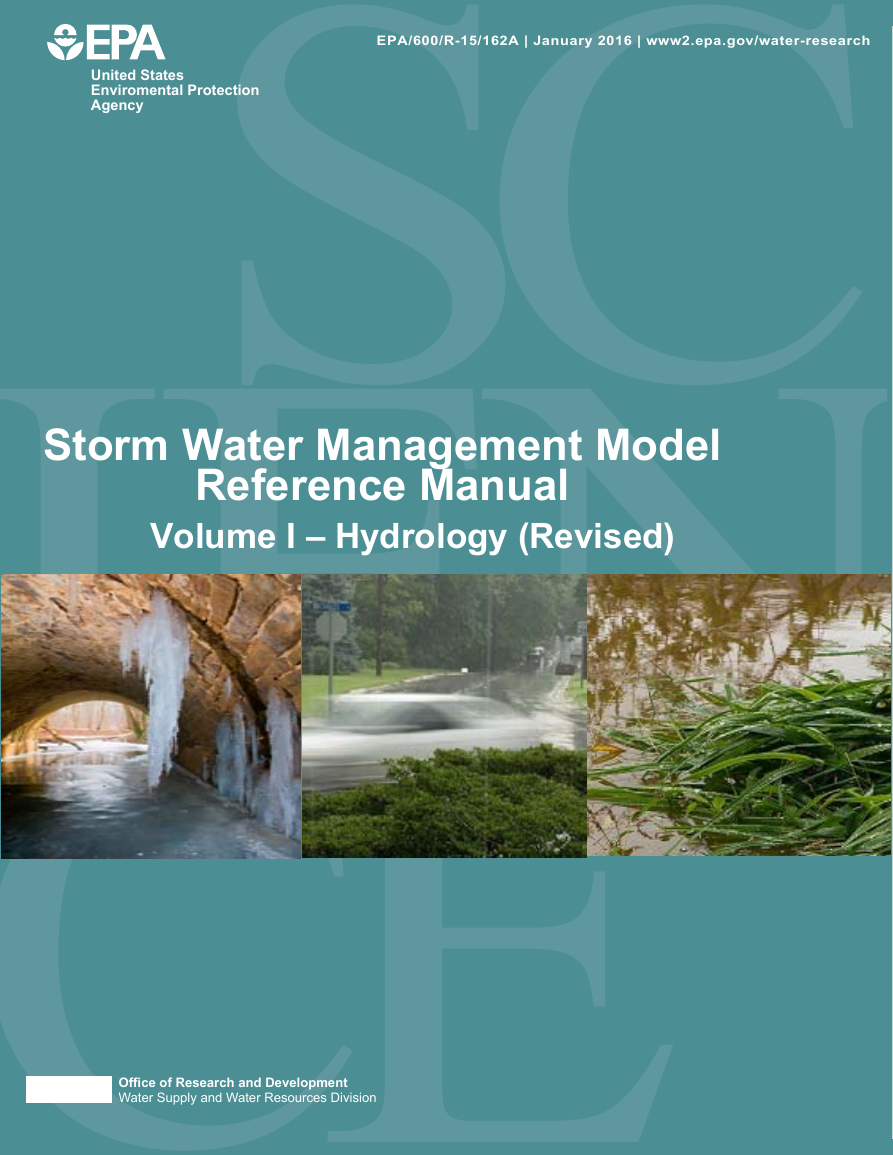

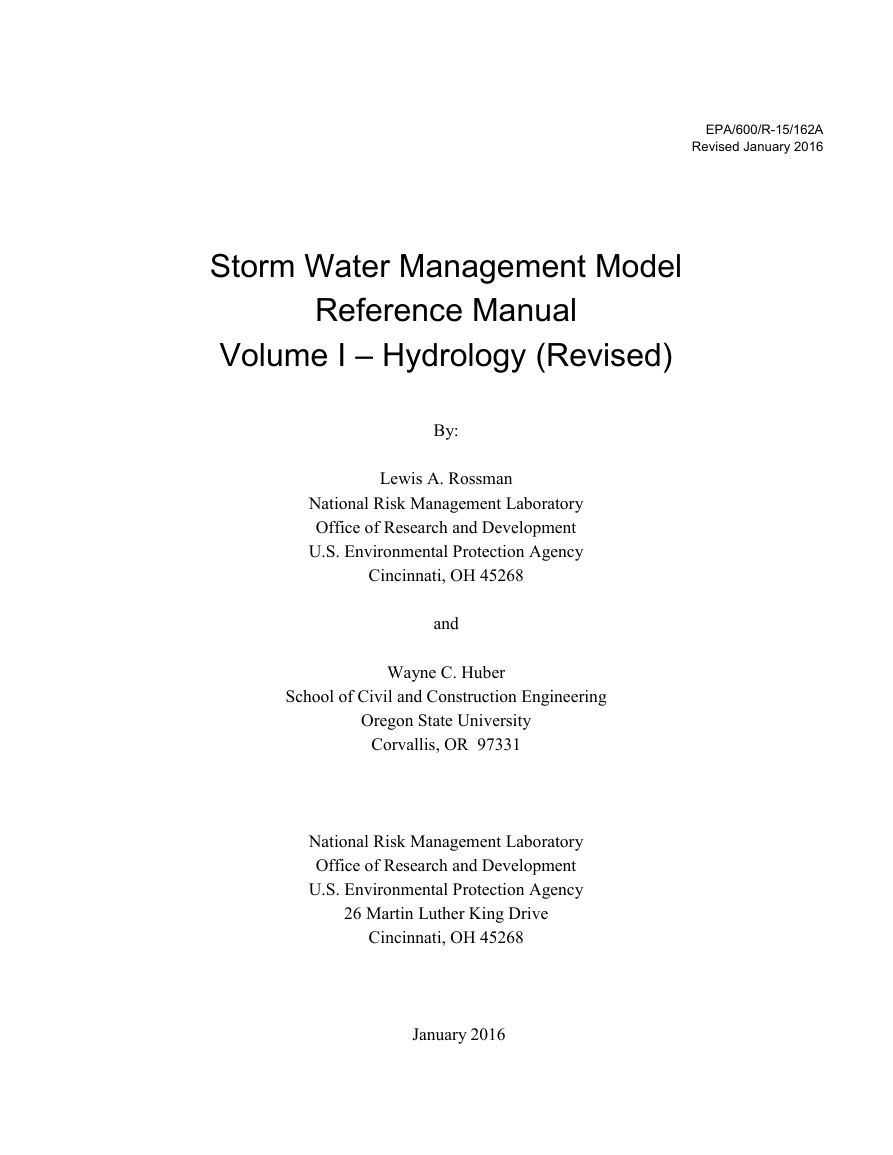

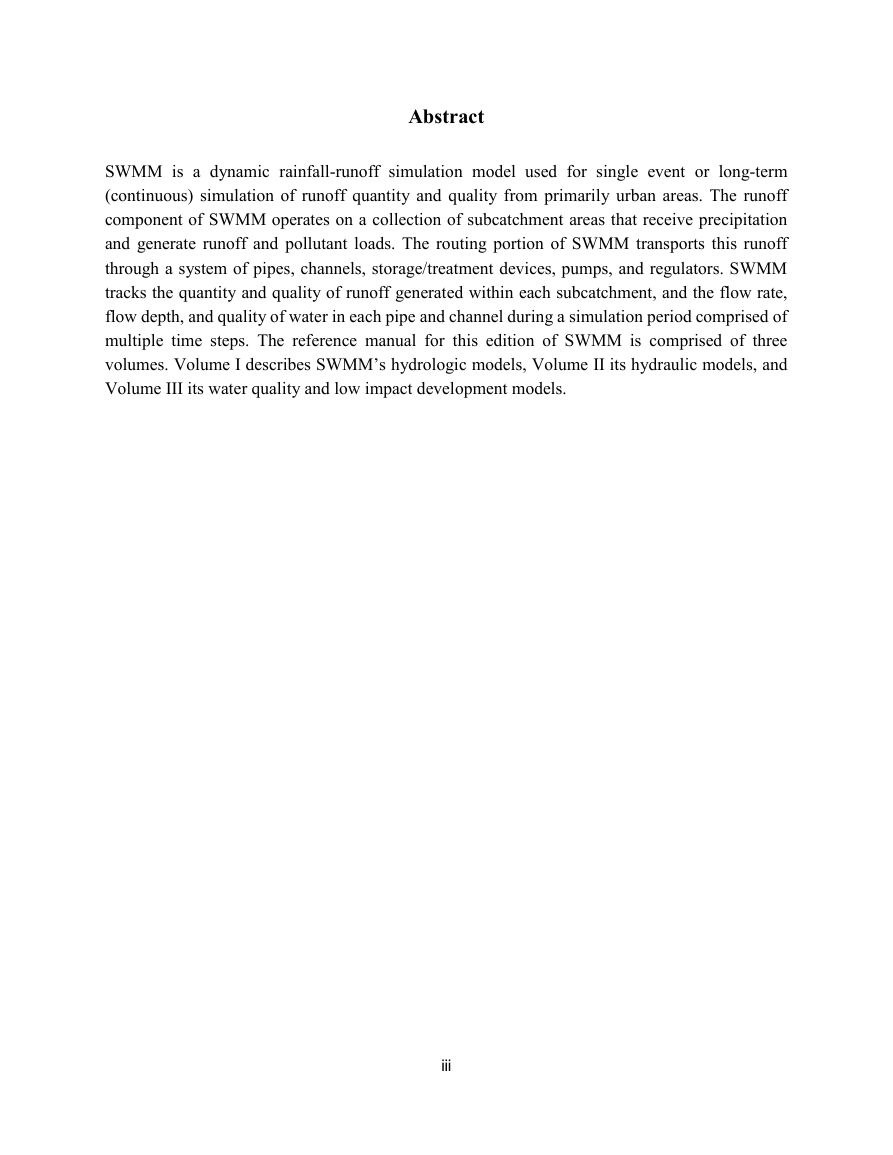
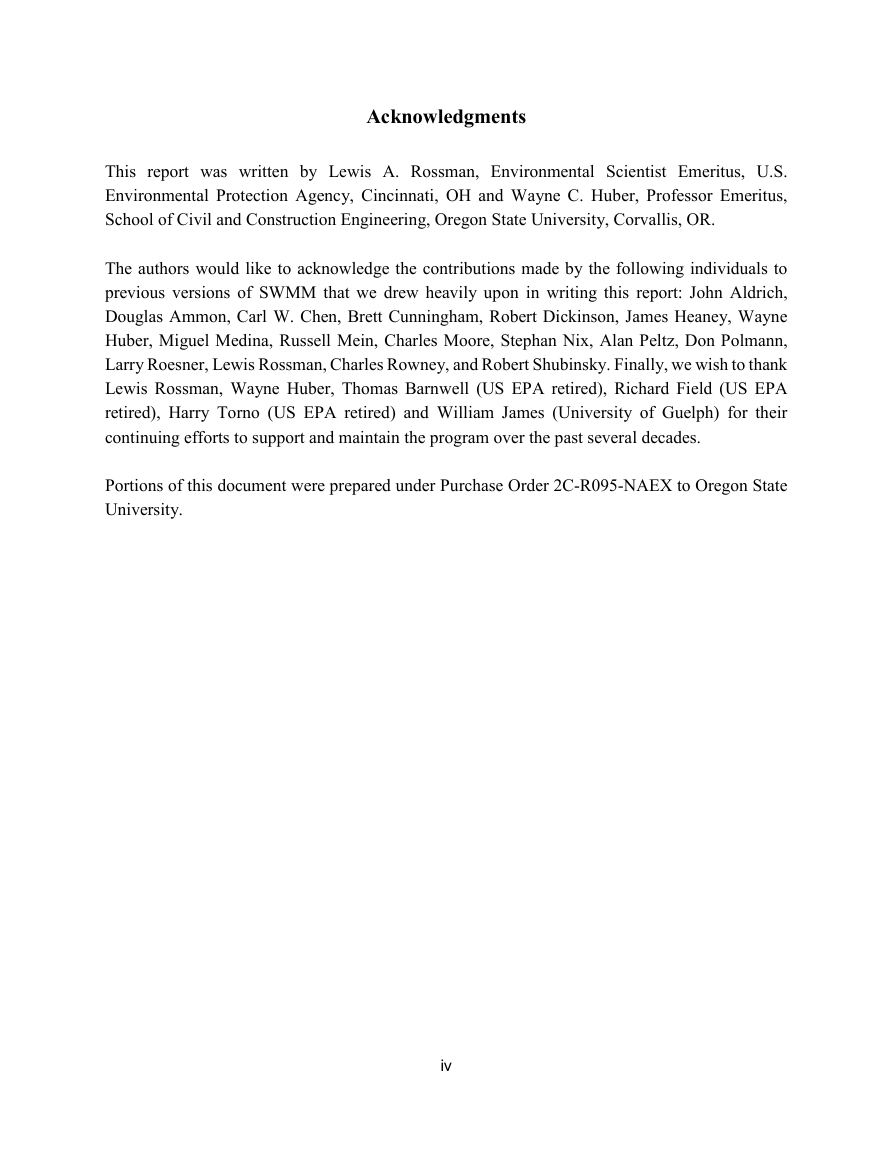
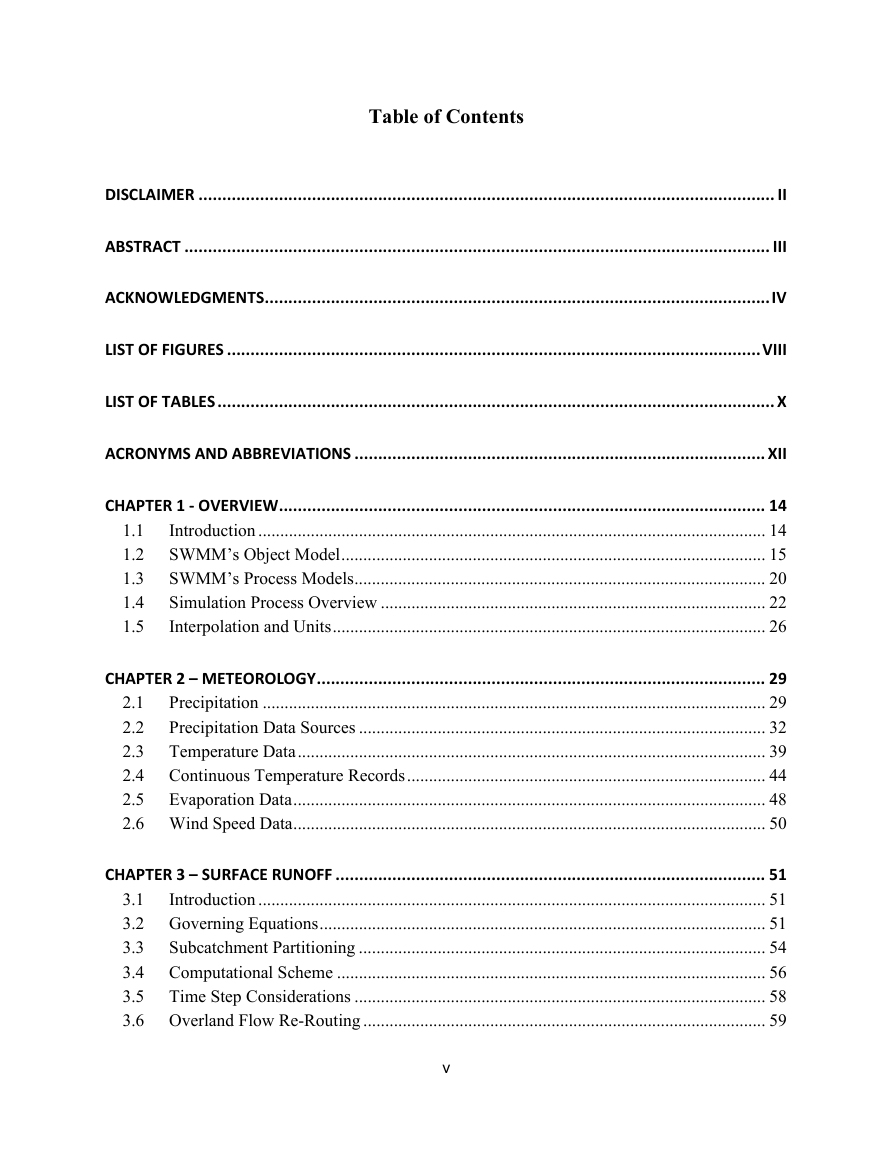









 2023年江西萍乡中考道德与法治真题及答案.doc
2023年江西萍乡中考道德与法治真题及答案.doc 2012年重庆南川中考生物真题及答案.doc
2012年重庆南川中考生物真题及答案.doc 2013年江西师范大学地理学综合及文艺理论基础考研真题.doc
2013年江西师范大学地理学综合及文艺理论基础考研真题.doc 2020年四川甘孜小升初语文真题及答案I卷.doc
2020年四川甘孜小升初语文真题及答案I卷.doc 2020年注册岩土工程师专业基础考试真题及答案.doc
2020年注册岩土工程师专业基础考试真题及答案.doc 2023-2024学年福建省厦门市九年级上学期数学月考试题及答案.doc
2023-2024学年福建省厦门市九年级上学期数学月考试题及答案.doc 2021-2022学年辽宁省沈阳市大东区九年级上学期语文期末试题及答案.doc
2021-2022学年辽宁省沈阳市大东区九年级上学期语文期末试题及答案.doc 2022-2023学年北京东城区初三第一学期物理期末试卷及答案.doc
2022-2023学年北京东城区初三第一学期物理期末试卷及答案.doc 2018上半年江西教师资格初中地理学科知识与教学能力真题及答案.doc
2018上半年江西教师资格初中地理学科知识与教学能力真题及答案.doc 2012年河北国家公务员申论考试真题及答案-省级.doc
2012年河北国家公务员申论考试真题及答案-省级.doc 2020-2021学年江苏省扬州市江都区邵樊片九年级上学期数学第一次质量检测试题及答案.doc
2020-2021学年江苏省扬州市江都区邵樊片九年级上学期数学第一次质量检测试题及答案.doc 2022下半年黑龙江教师资格证中学综合素质真题及答案.doc
2022下半年黑龙江教师资格证中学综合素质真题及答案.doc